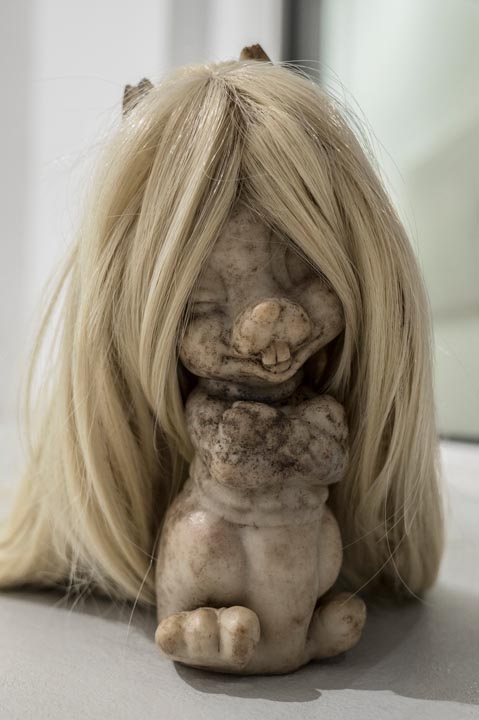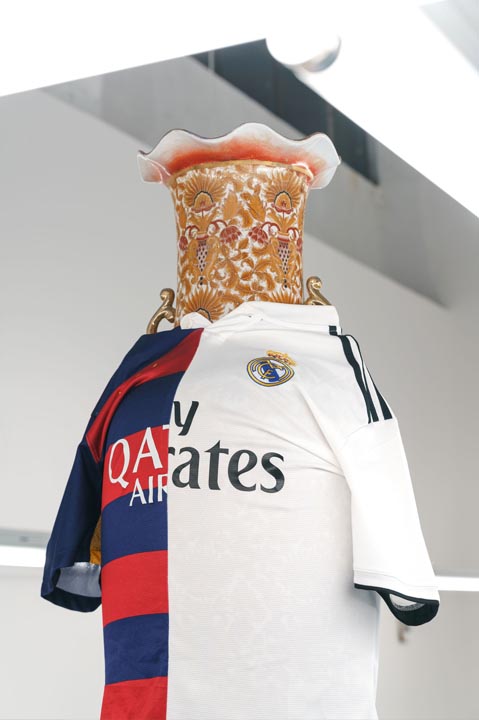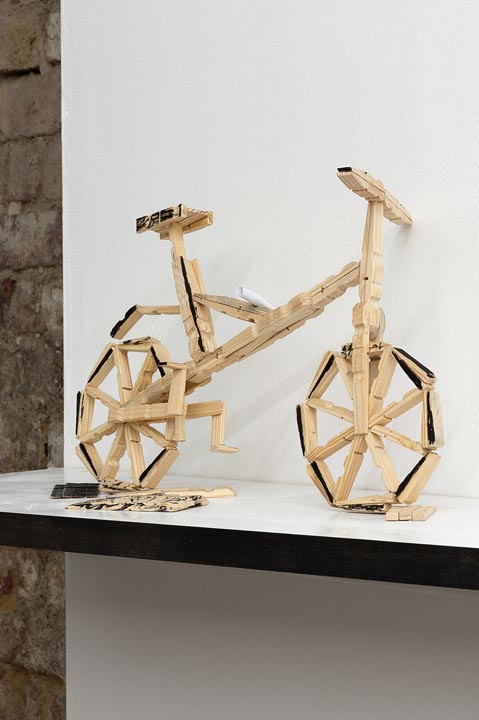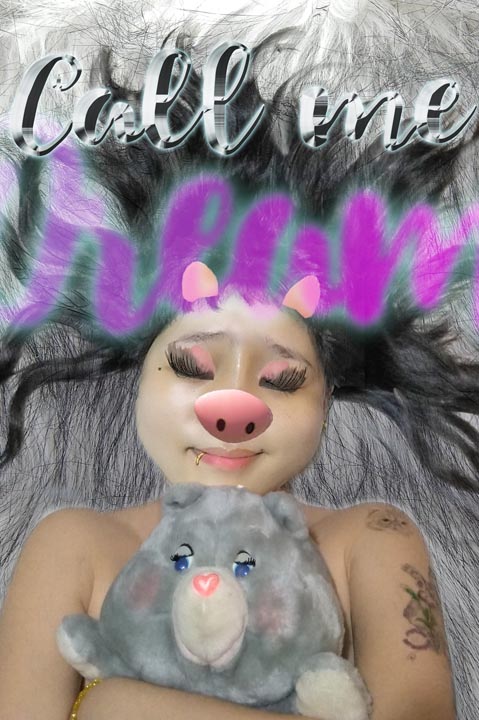OFLUXO

Imbroglio (or the ability to incorporate possibilities)
Naomi Gilon, Nona Inescu, Lucia Leuci, Lito Kattou
Curated by Like A Little Disaster
At Foothold / Like A Little Disaster, Polignano a Mare, Italy
Apr 28 – Jun 20, 2019
Photography by
Like A Little Disaster
Since its origins, human beings have been a hybrid, a cultural chameleon hybridized with technical, animal and vegetal otherness. Technology has already entered the body even before the postmodern era: the shape of the hands has evolved based on the manipulation of external objects and realities, as well as the other biological and cultural faculties have developed on the basis of interspecific and intraspecific selective external factors of competition and collaboration. Moreover, has evolved also on the basis of the possibility of relating to the inanimate reality with which the human species has always had relation. Like the form of the orchid mantis (Hymenopus coronatus), which, depends on the establishment of the habitat, the material alterity and the evolutionary-mutualistic partnership in its genetic code, so the collaboration with the inanimate world and with the animal and vegetable alterity has been established in the genetic code of our species, in our flesh (the technique ment as strengthening, extension of faculties or senses) as well as in our cultural productions. Human being is one of the most important shared projects created by nature, which makes him a dependent organism by definition – correlated and hybridized with natural otherness, abolishing any claim of purity, uniqueness and platonic essentiality.
As amply demonstrated by the biologist Lynn Margulis; life did not take over the world by combat, but by networking. The view of evolution as a chronic bloody competition among individuals and species, a popular distortion of Darwin’s notion of “survival of the fittest,” dissolves before a new view of continual cooperation, strong interaction, and mutual dependence among life forms. Life forms multiplied and complexified by coopting others, not just by killing them.
1+1=1
—



From the paramecium to the human race, all life forms are meticulously organized, sophisticated aggregates of evolving microbial life. Far from leaving microorganisms behind on an evolutionary “ladder,” we are both surrounded by them and composed of them. Having survived in an unbroken line from the beginnings of life, all organisms today are equally evolved.
This realization sharply shows up the conceit and presumption of attempting to measure evolution by linear progression from the simple – so called lower – to the more complex (with humans as the absolute “highest” forms at the top of the hierarchy). But the simplest and most ancient organisms are not only the forebears and the present substrate of Earth’s biota, but they are ready to expand and alter themselves and the rest of life, should we “higher” organisms, be so foolish as to annihilate ourselves. Next, the view of evolution as chronic bloody competition among individuals and species, a popular distortion of Darwin’s notion of “survival of the finest”, dissolves before a new view of continual cooperation, strong interaction, and mutual dependence among life forms.
Governed by DNA, the living cell can make a copy of itself, defying death and maintaining its identity by reproducing. Yet by also being susceptible to mutation, which randomly tinkers with identity, the cell has the potential to survive change.
Over the past fifty years or so, scientists have observed that prokaryotes routinely and rapidly transfer different bits of genetic material to other individuals. Each bacterium at any given time has the use of accessory genes, visiting from sometimes very different strains, which perform functions that is own DNA may not cover. Some of the genetic bits are recombined with cell’s native genes; others are passed on again. Some visiting genetic bits can rapidly move into the genetic apparatus of eukaryotic cells (such as our own) as well.
By constantly and rapidly adapting to environmental conditions, the organisms of the microcosm support the entire biota, their global exchange network ultimately affecting every living plant and animal. A “superorganism” that communicates, collaborates and cooperates on a spatial and temporal scale that transcends us. By creating organisms that are not simply the sum of their symbiotic parts—but something more like the sum of all the possible combinations of their parts—such alliances push developing beings into uncharted realms. Symbiosis, the merging of organisms into new collectives, proves to be a major power of change on Earth.
Each individual that grows, double its size, and reproduces is a great success story. Yet just as the individual’s success is subsumed in the global network of all life—a success of an ever greater order of gratitude.
/
Our bodies contain a veritable history of life on Earth. Our cells maintain an environment that is carbon-and hydrogen-rich, like that of the Earth when life began. They live in a medium of water and salts like the composition of the early seas. We become ho we are by the coming together of bacterial partners in a watery environment. These and other living relics of once-separate individuals, detected in a variety of species, make it increasingly certain that all visible organisms evolved through symbiosis, the coming together that leads to physical interdependence and the permanent sharing of cells and bodies. We derived in an unbroken sequence from the same molecules in the earliest cells that formed at the edges of the first warm, shallow oceans. Our bodies, like those of all life, preserve the vestigials of an earlier Earth. We coexist with present-day microbes and harbor remnants of others, symbiotically subsumed within our cells. In this way, the microcosm lives on in us and we in it. Some people may find this notion disturbing, unsettling. This perspective clearly brings down all human presumption of sovereignty over the nature, it challenges our ideas of individuality, of uniqueness and independence. It even violates our view of ourselves as discrete physical beings separated from the rest of nature. To think of ourselves and our environment as an evolutionary mosaic of microscopic life evokes imagery of being taken over, dissolved, annihilated.
Ex novo:
An “I” exists? An “Us” exists?
We are hybrids reluctant to every classification, knots of a network that links multiple and distant factors in an unbroken chain, risking to blow up all the orders, all the programs, all the effects.
We float together with the elements, there is no human “I” or “Us”. We ourselves are made up of billions and trillions of small components each with their own intelligence, whether it is a cell or something even smaller, like a subatomic particle. So actually does not exist even the “Us”. It exists as a temporary and fragile balance of coalescence between different elements. And “Us” has a multiplicity in itself that constantly acts with all the other animated and inanimate creators in the world.
Individuals emerge from bacterial communities. Identity is not an object; it is a process with addresses for all the different directions and dimensions in which it moves, and so it cannot so easily be fixed with a single number.















































































Imbroglio (or the ability to incorporate possibilities)
Naomi Gilon, Nona Inescu, Lucia Leuci, Lito Kattou
Curated by Like A Little Disaster
at Foothold / Like A Little Disaster
Via Cavour, 68 – Polignano a Mare – Italy
28.04.2019 – 20.06.2019
Like A Little Disaster
Previous Articles
OFLUXO is proudly powered by WordPress



